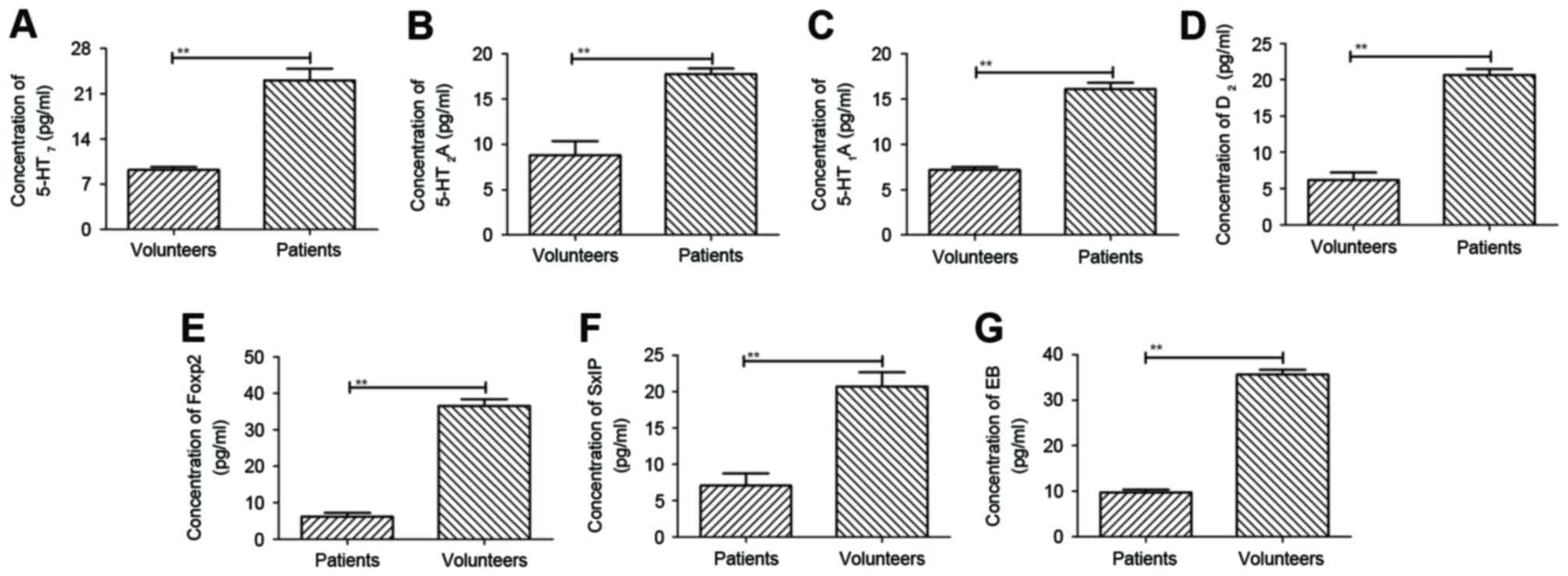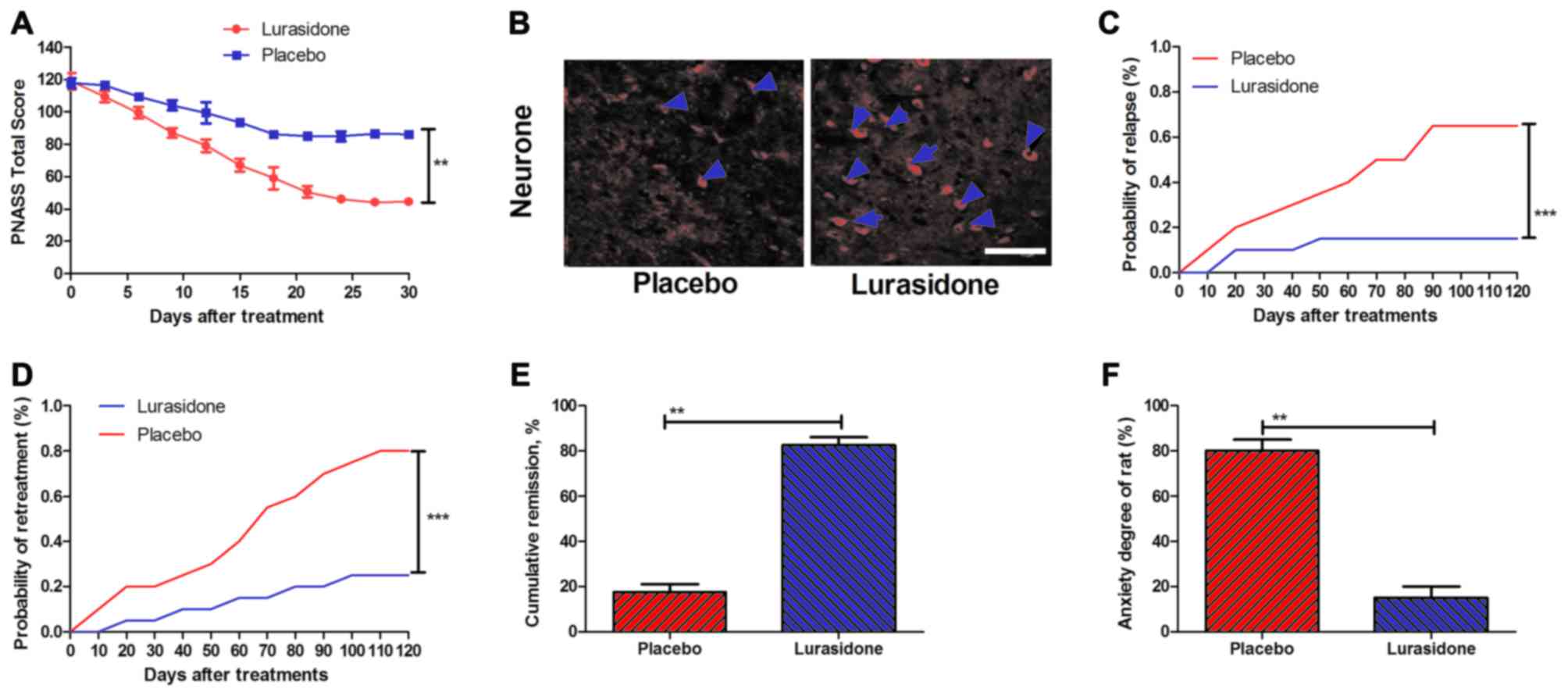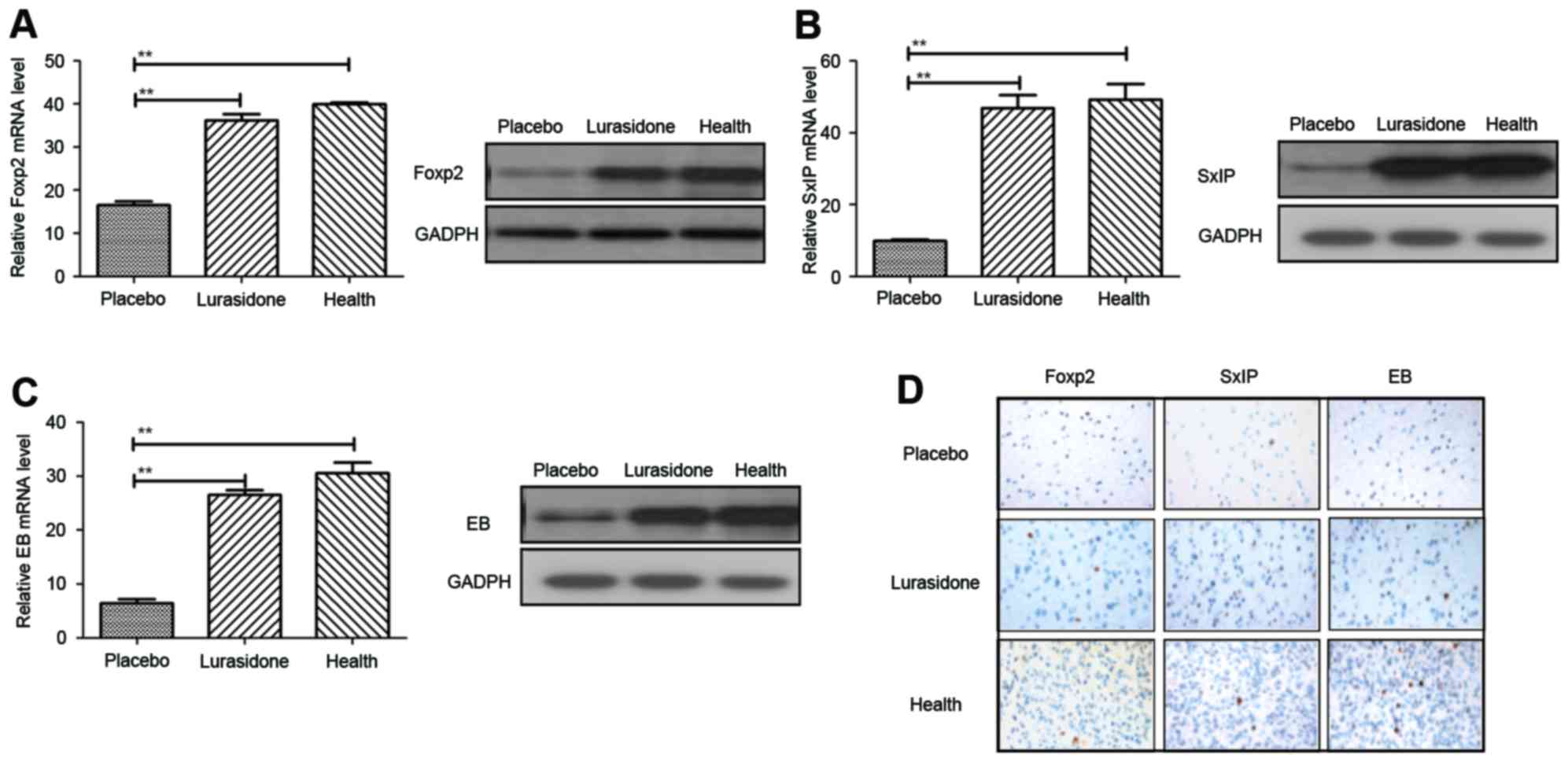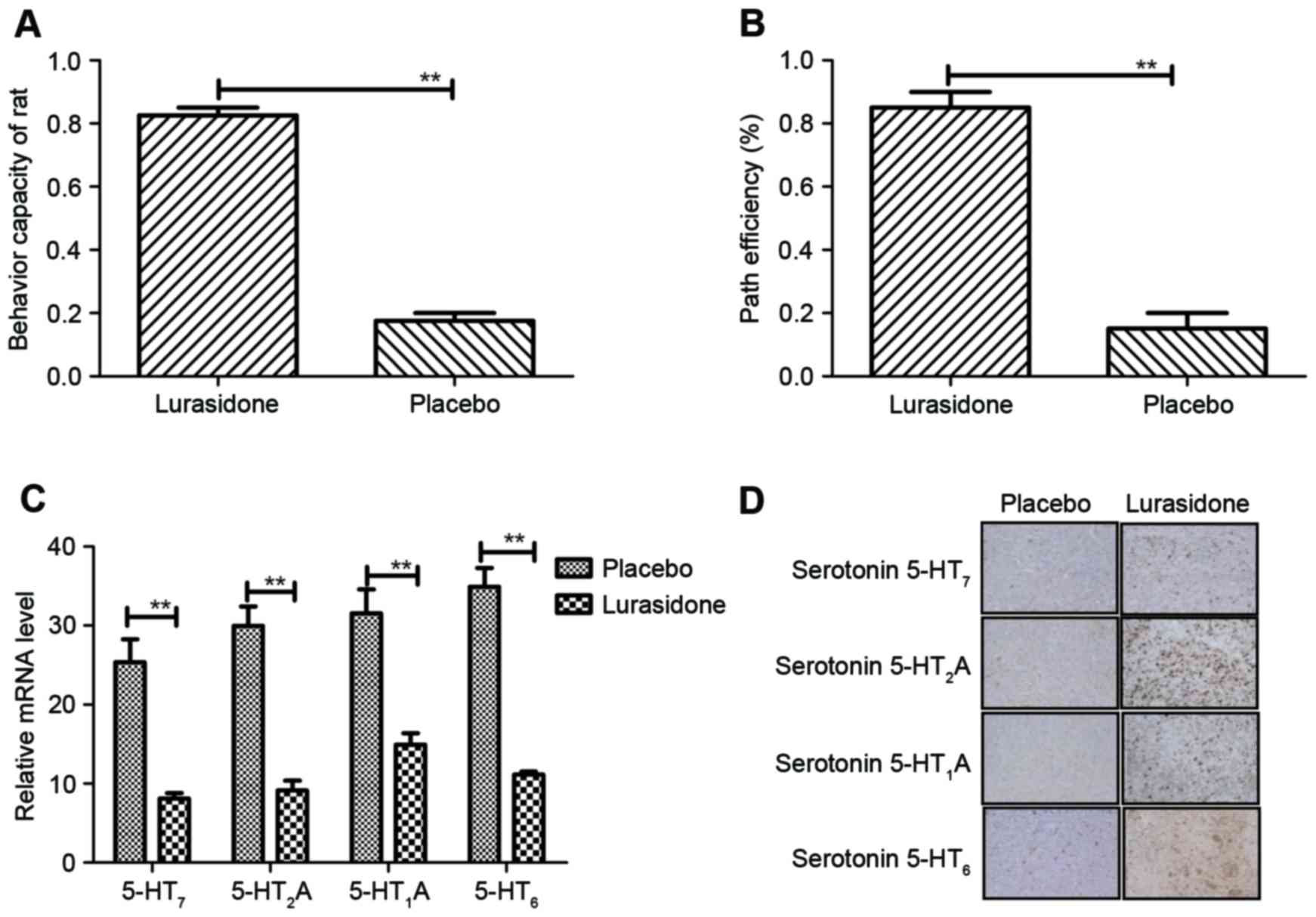|
1
|
Sakakibara Y, Mori M, Kuwabara S, Katayama
K, Hattori T, Koga M and Yuki N: Unilateral cranial and phrenic
nerve involvement in axonal Guillain-Barré syndrome. Muscle Nerve.
25:297–299. 2002. View Article : Google Scholar : PubMed/NCBI
|
|
2
|
Sahin E, Yilmaz A, Ersöz G, Uğuz M and
Kaya A: Multiple cranial nerve involvement caused by Brucella
melitensis. South Med J. 102:855–857. 2009. View Article : Google Scholar : PubMed/NCBI
|
|
3
|
Suzuki T: A further consideration on
long-acting injectable versus oral antipsychotics in the treatment
of schizophrenia: A narrative review and critical appraisal. Expert
Opin Drug Deliv. 13:253–264. 2016. View Article : Google Scholar : PubMed/NCBI
|
|
4
|
Bortolato B, Miskowiak KW, Köhler CA,
Vieta E and Carvalho AF: Cognitive dysfunction in bipolar disorder
and schizophrenia: A systematic review of meta-analyses.
Neuropsychiatr Dis Treat. 11:3111–3125. 2015.PubMed/NCBI
|
|
5
|
Ushio M, Iwasaki S, Sugasawa K and
Murofushi T: Superficial siderosis causing retrolabyrinthine
involvement in both cochlear and vestibular branches of the eighth
cranial nerve. Acta Otolaryngol. 126:997–1000. 2006. View Article : Google Scholar : PubMed/NCBI
|
|
6
|
Bahi A, Schwed JS, Walter M, Stark H and
Sadek B: Anxiolytic and antidepressant-like activities of the novel
and potent non-imidazole histamine H3 receptor
antagonist ST-1283. Drug Des Devel Ther. 8:627–637. 2014.PubMed/NCBI
|
|
7
|
Borella L, Russell J, Rimele TJ, Grimes D,
Failli A and Mir GN: Antisecretory and antiulcer activities of a
potent new histamine H2-receptor antagonist with an intermediate
duration of action. Arzneimittelforschung. 38:366–372.
1988.PubMed/NCBI
|
|
8
|
Kent JS, Bolbecker AR, O'Donnell BF and
Hetrick WP: Eyeblink conditioning in schizophrenia: A critical
review. Front Psychiatry. 6:1462015. View Article : Google Scholar : PubMed/NCBI
|
|
9
|
McEvoy J and Citrome L: Brexpiprazole for
the treatment of schizophrenia: A review of this novel
serotonin-dopamine activity modulator. Clin Schizophr Relat
Psychoses. 9:177–186. 2016. View Article : Google Scholar : PubMed/NCBI
|
|
10
|
Naito Y, Yoshikawa T, Matsuyama K, Yagi N,
Nakamura Y, Nishimura S, Kaneko T, Yoshida N and Kondo M: Effect of
the histamine H2-receptor antagonist
(+/−)-(E)-1-[2-hydroxy-2-(4-hydroxyphenyl)ethyl]-3′-[2-[[[5-methylamino)methyl-2-furyl]methyl]thio]ethyl]-2′-(methylsulfonyl)guanidine
on acute gastric mucosal injury in rats and its free-radical
scavenging activities. Arzneimittelforschung. 47:845–848.
1997.PubMed/NCBI
|
|
11
|
Ishikawa H, Ito H, Higaki M, Higaki M,
Matsumoto Y, Kamimura T, Katsura Y, Tomishi T, Inoue Y, Takasugi H,
et al: FR145715, a novel histamine H2 receptor antagonist, with
specific anti-Helicobacter pylori activities. Eur J Pharmacol.
378:299–310. 1999. View Article : Google Scholar : PubMed/NCBI
|
|
12
|
Ishibashi T, Horisawa T, Tokuda K,
Ishiyama T, Ogasa M, Tagashira R, Matsumoto K, Nishikawa H, Ueda Y,
Toma S, et al: Pharmacological profile of lurasidone, a novel
antipsychotic agent with potent 5-hydroxytryptamine 7 (5-HT7) and
5-HT1A receptor activity. J Pharmacol Exp Ther. 334:171–181. 2010.
View Article : Google Scholar : PubMed/NCBI
|
|
13
|
Loebel A and Citrome L: Lurasidone: A
novel antipsychotic agent for the treatment of schizophrenia and
bipolar depression. BJPsych Bull. 39:237–241. 2015. View Article : Google Scholar : PubMed/NCBI
|
|
14
|
Citrome L: Lurasidone for schizophrenia: A
review of the efficacy and safety profile for this newly approved
second-generation antipsychotic. Int J Clin Pract. 65:189–210.
2011. View Article : Google Scholar : PubMed/NCBI
|
|
15
|
Loebel A, Cucchiaro J, Silva R, Kroger H,
Sarma K, Xu J and Calabrese JR: Lurasidone as adjunctive therapy
with lithium or valproate for the treatment of bipolar I
depression: A randomized, double-blind, placebo-controlled study.
Am J Psychiatry. 171:169–177. 2014. View Article : Google Scholar : PubMed/NCBI
|
|
16
|
Citrome L: Lurasidone in schizophrenia:
New information about dosage and place in therapy. Adv Ther.
29:815–825. 2012. View Article : Google Scholar : PubMed/NCBI
|
|
17
|
Nunes PM, Wright AJ, Veltien A, van Asten
JJ, Tack CJ, Jones JG and Heerschap A: Dietary lipids do not
contribute to the higher hepatic triglyceride levels of
fructose-compared to glucose-fed mice. FASEB J. 28:1988–1997. 2014.
View Article : Google Scholar : PubMed/NCBI
|
|
18
|
Livak KJ and Schmittgen TD: Analysis of
relative gene expression data using real-time quantitative PCR and
the 2(-Delta Delta C(T)) method. Methods. 25:402–408. 2001.
View Article : Google Scholar : PubMed/NCBI
|
|
19
|
Wai-Hoe L, Wing-Seng L, Ismail Z and
Lay-Harn G: SDS-PAGE-Based quantitative assay for screening of
kidney stone disease. Biol Proced Online. 11:145–160. 2009.
View Article : Google Scholar : PubMed/NCBI
|
|
20
|
Dirani M, Nasreddine W, Abdulla F and
Beydoun A: Seizure control and improvement of neurological
dysfunction in Lafora disease with perampanel. Epilepsy Behav Case
Rep. 2:164–166. 2014. View Article : Google Scholar : PubMed/NCBI
|
|
21
|
Vaisburd S, Shemer Z, Yeheskel A, Giladi E
and Gozes I: Risperidone and NAP protect cognition and normalize
gene expression in a schizophrenia mouse model. Sci Rep.
5:163002015. View Article : Google Scholar : PubMed/NCBI
|
|
22
|
Berezova IV, Shishkina GT, Kalinina TS and
Dygalo NN: Behavior in the forced-swimming test and expression of
BDNF and Bcl-xl genes in the rat brain. Zh Vyssh Nerv Deiat Im I P
Pavlova. 61:332–339. 2011.(In Russian). PubMed/NCBI
|
|
23
|
Garcia-Calero E, Botella-Lopez A,
Bahamonde O, Perez-Balaguer A and Martinez S: FoxP2 protein levels
regulate cell morphology changes and migration patterns in the
vertebrate developing telencephalon. Brain Struct Funct.
221:2905–2917. 2016. View Article : Google Scholar : PubMed/NCBI
|
|
24
|
Chebel S, Letaief L, Boughammoura-Bouatay
A, Dachraoui F, Ouanes I, Ouanes-Besbes L, Abroug F and Frih-Ayed
M: Multiple cranial nerve involvement: Consider the diagnosis of
cephalic tetanus. A case report and review of the literature. Rev
Neurol (Paris). 166:948–950. 2010.(In French).
|
|
25
|
Mabray MC, Glastonbury CM, Mamlouk MD,
Punch GE, Solomon DA and Cha S: Direct cranial nerve involvement by
gliomas: Case series and review of the literature. AJNR Am J
Neuroradiol. 36:1349–1354. 2015. View Article : Google Scholar : PubMed/NCBI
|
|
26
|
Mijajlovic M, Mirkovic M,
Mihailovic-Vucinic V, Aleksic V and Covickovic-Sternic N:
Neurosarcoidosis: Two case reports with multiple cranial nerve
involvement and review of the literature. Biomed Pap Med Fac Univ
Palacky Olomouc Czech Repub. 158:662–667. 2014.PubMed/NCBI
|
|
27
|
Galassi G, Albertini G, Valzania F and
Barbieri A: Cranial nerve involvement as presenting sign of
multifocal motor neuropathy. J Clin Neurosci. 19:1733–1735. 2012.
View Article : Google Scholar : PubMed/NCBI
|
|
28
|
Watanabe Y, Someya T and Nawa H: Cytokine
hypothesis of schizophrenia pathogenesis: Evidence from human
studies and animal models. Psychiatry Clin Neurosci. 64:217–230.
2010. View Article : Google Scholar : PubMed/NCBI
|
|
29
|
de Witte L, Tomasik J, Schwarz E, Guest
PC, Rahmoune H, Kahn RS and Bahn S: Cytokine alterations in
first-episode schizophrenia patients before and after antipsychotic
treatment. Schizophr Res. 154:23–29. 2014. View Article : Google Scholar : PubMed/NCBI
|
|
30
|
Debnath M and Chaudhuri TK: The role of
HLA-G in cytokine homeostasis during early pregnancy complicated
with maternal infections: A novel etiopathological approach to the
neurodevelopmental understanding of schizophrenia. Med Hypotheses.
66:286–293. 2006. View Article : Google Scholar : PubMed/NCBI
|
|
31
|
Bhattarai JP, Roa J, Herbison AE and Han
SK: Serotonin acts through 5-HT1 and 5-HT2 receptors to exert
biphasic actions on GnRH neuron excitability in the mouse.
Endocrinology. 155:513–524. 2014. View Article : Google Scholar : PubMed/NCBI
|
|
32
|
Girgis RR, Kumar SS and Brown AS: The
cytokine model of schizophrenia: Emerging therapeutic strategies.
Biol Psychiatry. 75:292–299. 2014. View Article : Google Scholar : PubMed/NCBI
|
|
33
|
Andrade R and Haj-Dahmane S: Serotonin
neuron diversity in the dorsal raphe. ACS Chem Neurosci. 4:22–25.
2013. View Article : Google Scholar : PubMed/NCBI
|
|
34
|
Politis M, Wu K, Loane C, Quinn NP, Brooks
DJ, Oertel WH, Björklund A, Lindvall O and Piccini P: Serotonin
neuron loss and nonmotor symptoms continue in Parkinson's patients
treated with dopamine grafts. Sci Transl Med. 4:128ra412012.
View Article : Google Scholar : PubMed/NCBI
|
|
35
|
Mlinar B, Montalbano A, Baccini G, Tatini
F, Berlinguer Palmini R and Corradetti R: Nonexocytotic serotonin
release tonically suppresses serotonergic neuron activity. J Gen
Physiol. 145:225–251. 2015. View Article : Google Scholar : PubMed/NCBI
|













